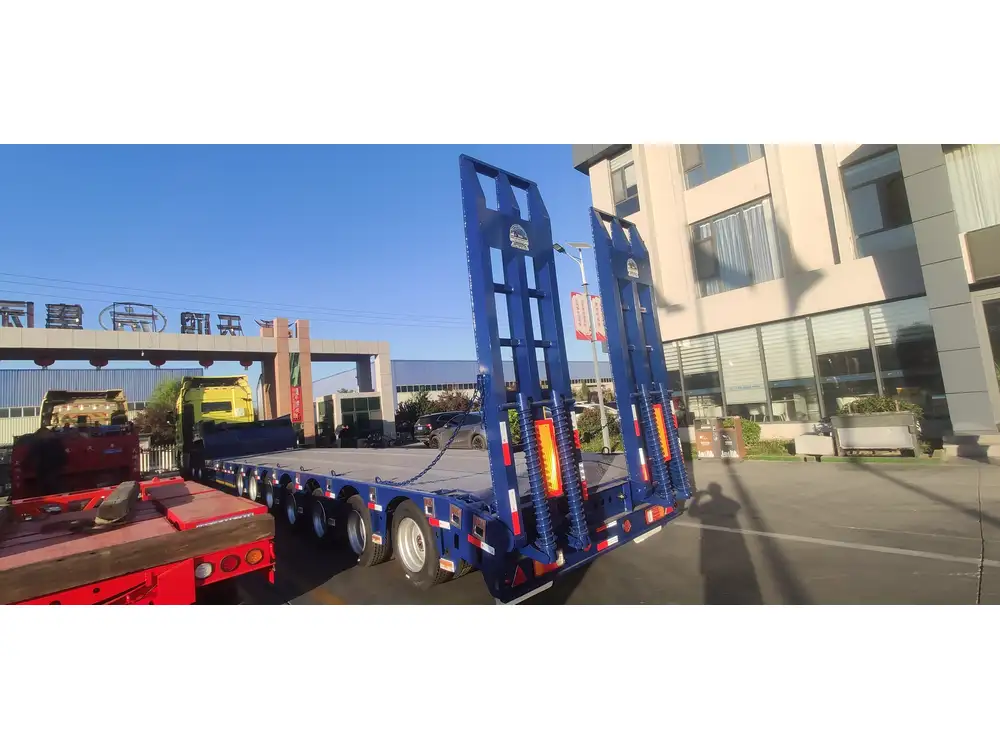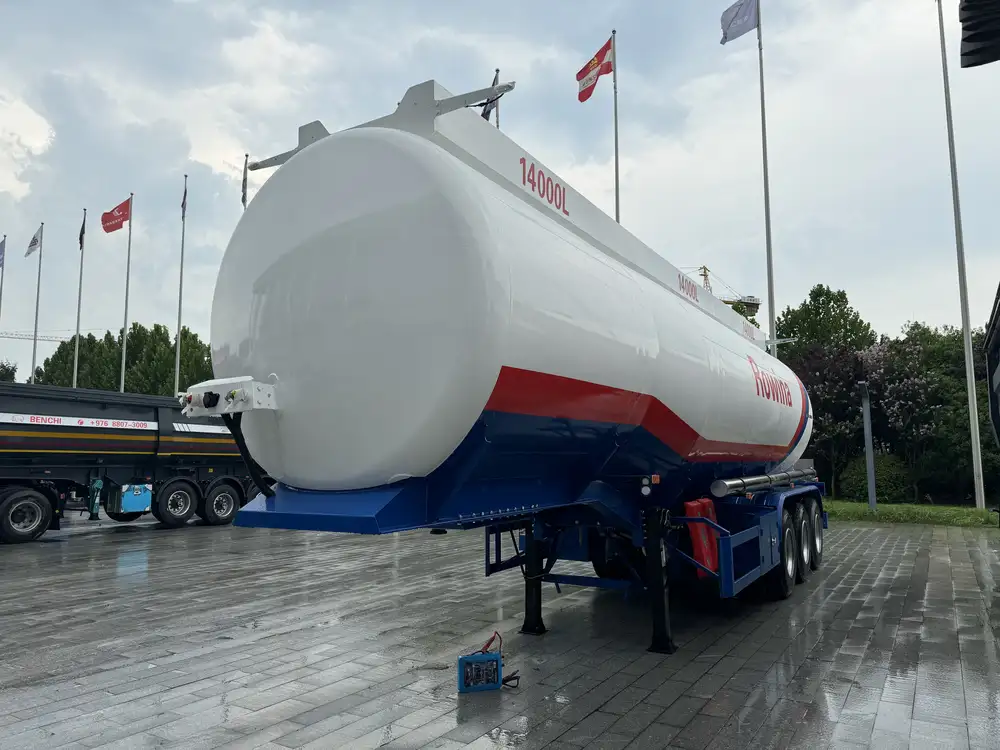Lowering a semi-trailer, whether for improved aerodynamics, easier loading and unloading, or overall performance enhancement, is a process that requires a solid understanding of both the mechanical components involved and the implications for safety and legality. This guide delves into various methodologies and considerations surrounding the lowering of semi-trailers, ensuring that you are equipped with the necessary knowledge to make informed decisions.
Understanding the Fundamentals of Semi-Trailer Mechanics
Before diving into the specifics of lowering a semi-trailer, it’s crucial to grasp the essential components that play a role in the functionality and design of semi-trailers.
Key Components of a Semi-Trailer
| Component | Description |
|---|---|
| Chassis | The frame that supports the entire structure, usually made from high-strength steel. |
| Suspension System | Keeps the trailer stable by absorbing shocks and impacts, critical when lowering. |
| Axles | Connect the wheels and support the trailer load. Their position can be adjusted to lower the trailer. |
| Landing Gear | Used to support the front of the trailer when detached; can include adjustable heights. |
| King Pin | Connects the trailer to the tractor; proper alignment is essential for smooth operations. |

Reasons for Lowering a Semi-Trailer
There are various motivations for lowering a semi-trailer, each with its own set of advantages and challenges.
Enhanced Aerodynamics
Lowering a semi-trailer can reduce wind resistance, thereby improving fuel efficiency. When the trailer sits closer to the ground, air flows more smoothly around it, which can result in substantial savings on fuel costs over time.
Improved Loading and Unloading
For businesses that frequently deal with heavy cargo, lowering the trailer makes loading and unloading significantly easier. A lower bed height reduces the angle of loading ramps and enhances accessibility.

Improved Stability
Lowering the trailer’s height can improve its center of gravity, particularly beneficial during high-speed maneuvers and turns.
Methods of Lowering a Semi-Trailer
1. Adjusting the Suspension System
The most common method to lower a semi-trailer is by modifying the suspension system.
Air Suspension Systems: Many modern semi-trailers come equipped with air suspension systems that can be adjusted via air pressure. By releasing air from the suspension bags, the trailer height can be lowered quickly and efficiently.
Trailer Axle Positioning: Some trailers allow for the repositioning of axle assemblies. Moving axles closer to the front or rear can affect the overall height and performance characteristics of the trailer.
Important Considerations: Ensure that your adjustments comply with local regulations. Lowering a trailer beyond the legal limits can lead to fines and safety issues.

2. Modifying the Frame
For more permanent height adjustments, the trailer’s frame can be modified.
Cutting and Welding: Involves cutting sections of the trailer’s frame and welding them back together at a lower height. This method requires precise engineering to maintain structural integrity.
Adding Drop Axles: This involves installing axles designed to sit lower than standard configurations. Drop axles alter the height at which the wheels sit, effectively lowering the trailer.
Considerations: Frame modifications should only be performed by professionals who can ensure that the modifications comply with safety standards and load ratings.
3. Utilizing Adjustable Landing Gear
Adjustable landing gear not only supports the trailer when it is unclipped but can also provide additional height adjustments.
Crank Mechanisms: Many landing gear systems come equipped with a crank mechanism that allows the user to adjust the height up and down easily.
Air-Release Mechanisms: Some newer systems leverage air-release functions to raise or lower the trailer quickly, allowing for extensive flexibility during loading and unloading processes.
Benefits: This method is cost-effective and doesn’t require extensive mechanical knowledge to operate.
Safety and Compliance Considerations
While lowering a semi-trailer can enhance its efficiency and functionality, it’s crucial to prioritize safety and compliance.

Legal Regulations
Height Restrictions: Most jurisdictions have legal height restrictions for commercial vehicles. Verify that any modifications adhere to federal and state guidelines to avoid legal complications.
Weight Distribution: Ensure that weight distribution remains even and within safe limits. An improperly balanced trailer can not only be dangerous to operate but can lead to severe penalties during inspections.
Impact on Towing Vehicles
Compatibility: Confirm that the towing vehicle can accommodate the height and setup of the modified trailer. Changes to one may necessitate adaptations on the other.
Fifth Wheel Height Adjustment: If the semi-trailer’s height has significantly changed, adjustments may also be needed for the fifth wheel connection. The alignment can affect the handling and performance of both the truck and trailer.
Routine Inspections
Conduct routine inspections on the trailer post-modification. Ensure that:
- Suspension systems are intact and functioning as intended.
- Brake systems are responsive and within specified safety limits.
- All structural alterations have not compromised the integrity of the trailer.

Conclusion: Lowering Your Semi-Trailer for Optimal Performance
In summary, lowering a semi-trailer is a multifaceted endeavor that blends practicality with regulatory considerations. Whether through adjusting the suspension, modifying the frame, or utilizing adjustable landing gear, each method offers distinct advantages and challenges. Prioritizing safety standards and compliance is paramount when making any modifications.
By understanding the essential components and implications of lowering your semi-trailer, you can enhance its performance, improve aerodynamics, and make loading and unloading processes more seamless. Always opt for professional assistance when needed and remain aware of local regulations to ensure a smooth operational experience.
Additional Resources
| Resource | Description |
|---|---|
| Local Trucking Associations | Provide insights on regulatory compliance and best practices. |
| Professional Mechanics | Consult with experts for suspension modifications and welding. |
| Safety Inspection Services | Ensure that your trailer meets local safety standards after modifications. |
By integrating these practices, you not only enhance your operational efficiency but also contribute to a safer roadway environment. Stay informed, stay compliant, and drive with confidence.



